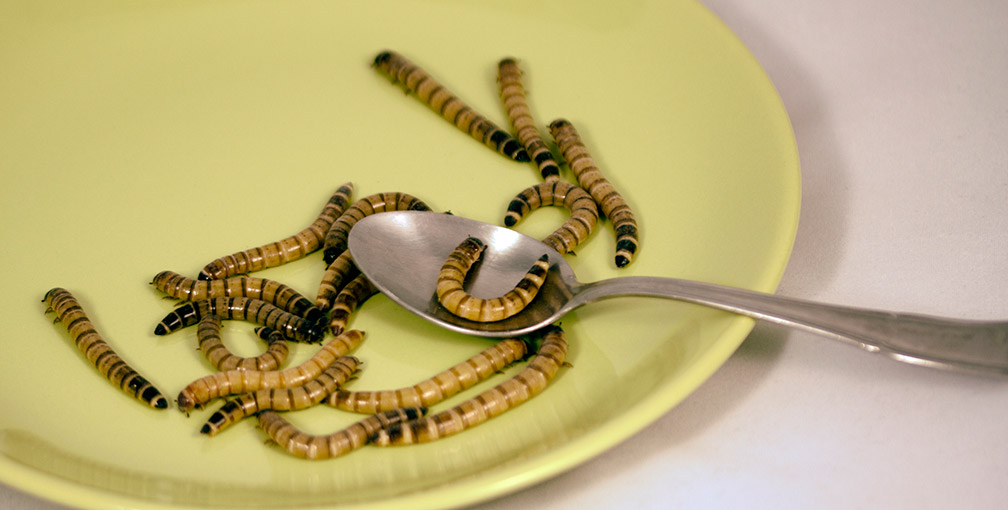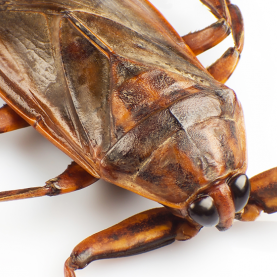Entomophagy
In the West, insects are not on the menu. It is very difficult for Europeans to imagine consuming something symbolically associated with uncleanliness and death. However, from a strictly nutritional point of view, a large number of insects are edible. Entomophagy has emerged as a future solution for the sustainability of food systems, but this requires a change of where insects feature in the Western culinary repertoire.
Abhorred insects
While entomophagy is a popular practice in numerous regions of the world, in Western Europe, insects are not invited to the table. The very idea of eating them provokes a strong aversion in most people. This is a cognitive aversion, not founded on objective facts, but on our perception of the foodstuff. In the West, insects are often synonymous with repulsive, swarming vermin, associated with uncleanliness and decomposition, disease and death. They are furtive, they sting, they are parasites and they frighten us. Consequently, eating them poses a problem. Incorporating insects into our diet is deemed ‘unthought of’ (Fischler, 2001) owing to prejudices relating to health. The very idea of it can provoke violent emotions and even physical reactions such as vomiting. Yet, this has not always been the case. Prehistoric human coprolites found in the soil in present-day North America prove that entomophagy is as old as humanity. According to the Bible, John the Baptist ate locusts in the desert (Matthew, 3:4). These crop-destroying insects are still a popular foodstuff in North Africa and the Middle East today. Pliny the Elder reported that the Romans smothered them in honey and regarded them as a delicacy, alongside cossi (stag beetle larvae) which they fattened with flour. More recently, in the 19th century, locals in the south of France ate cockchafer larvae grilled over a wood fire.
Seen from the West: a dietary practice born of necessity
From the Western perspective, the consumption of insects is seen as a matter of survival, a symptom of poverty or of food supply problems, leaving populations no choice but to resort to entomophagy. Many insects are in fact edible and even proffer nutritional and health benefits. Over recent years, Europe has seen a growth in insect-breeding farms, presenting these animals as a substitute for meat. Consuming insects could go some way toward meeting the need for sustainable food systems. This would nevertheless require a change in our perception, whereby the main argument highlights the economic and environmental benefits of insects rather than considering them in terms of their flavour and eating them for pleasure. The idea is therefore to cultivate a taste for insects in the West, in order to establish this environmentally advantageous dietary practice.
The abstract insect
Food culture defines what it deems edible beyond just the nutritional and health criteria. The aversion and disgust provoked by the sight of bugs on our plates stall attempts to market insects in the West. One of the solutions manufacturers have now devised is to produce foodstuffs made from insect flour. The insects are then no longer recognisable in the finished product; they are merely indicated in the list of ingredients. In fact, we already eat many insects without knowing it: around 500 g a year in salads and fruit; as well as cochineal in the form of the natural colouring agent E120 in strawberry yoghurts and other processed foodstuffs. Fancy a larva steak or locust surimi?
Deutsch, Richard. 2008. Dictionnaire des tabous alimentaires. Paris : Favre, 2008. ISBN/2-82-89099-72.
Durst, P.B, et al. 2008. Edible forest insects, Humans bite back. FAO [En ligne] 19 Fevrier 2008. http://www.fao.org/docrep/012/i1380e00.pdf
Fischler, Claude. 2001(1990). L'Homnivore. Paris : Odile Jacob, 2001(1990). 978-2-7381-0927-8.
Le Gall, P. et Motte-Florac, E. 2016. Savoureux insectes, De l'aliment traditionnel à l'innovation gastronomique. Rennes : Presses Universitaires de Rennes/ Insitut de Recherche pour le Développement, 2016. ISBN/978-2-86906-417-1.
Miot, Henri. 1870. Les insectes auxiliaires et les insectes utiles. Paris : Librairie Agricole. [En ligne] 09.03.2017. http://gallica.bnf.fr/ark:/12148/bpt6k28424d
Rozin, P. et Fallon, A.E. 1987. A perspective on disgust. Psychological Review. 1987, Vol. 94, 1, pp. 23-41.




